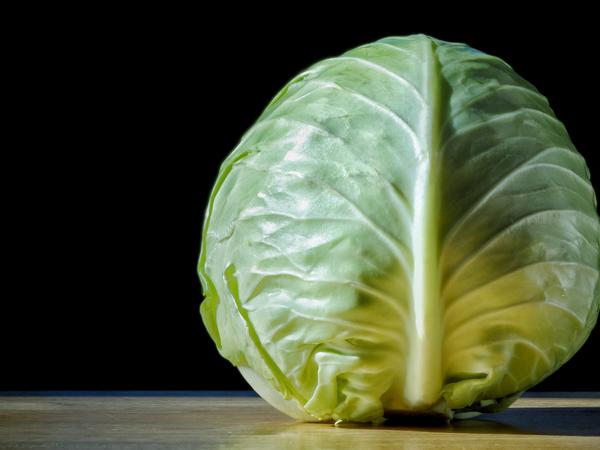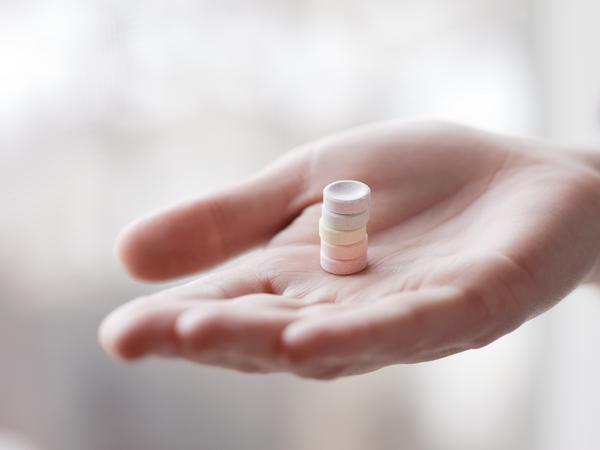Milk stasis - What helps and where does it come from?
A typical problem I am contacted about for breastfeeding counseling is milk stasis. Some women have a milk congestion at some point during the breastfeeding period, some even several times.
But what is a milk stasis anyway? How do I tell the difference between congestion and mastitis? Where does it come from? What can I do if I have a milk congestion? And what can I do to prevent milk retention in the first place?
I would like to address these and other questions in this article.
Summary
What is a milk stasis?
Actually, the term "milk stasis " describes it very well: It is one or more congested milk ducts of a breastfeeding woman. Often, a milk stasis is not even noticed and disappears with the next breastfeeding. If it is a painful, unpleasant milk stasis, it manifests itself in various symptoms (see How can I recognize a milk stasis?) and should be taken seriously so that it does not get worse.
There are different theories on the causes of a milk stasis. The hardened areas may be fatty plugs, whereby fatty parts of the milk have clumped together and can therefore no longer be removed. It is further assumed that calcium granules can also form in the breast milk. These are relatively solid and therefore very unpleasant. Another assumption is that dead cells can block the milk ducts.
Milk engorgement occurs most frequently in the first three months, i.e. at the beginning of breastfeeding. It is not uncommon for it to occur during the change of milk from colostrum to mature milk and the associated increase in milk volume.
At this point, I would like to mention my article On the importance of newborn milk (colostrum).
How can I recognize a milk stasis?
Usually, a milk stasis manifests itself with typical signs of inflammation: Redness, pain, heat in the congested area or overall fever, swelling or hardened areas.

In addition, milk blisters are visible in some women. Milk vesicles are thin membranes that form on the end of a milk duct.
Many women also feel overall fatigue and tiredness with flu-like symptoms. Lymph nodes in the armpit may also be swollen and sensitive to pressure.
What is the difference between lactic congestion and mastitis?
Differentiating between lactic congestion and mastitis is not easy and usually not necessary. If the symptoms or fever last longer than 24 hours, a doctor, preferably a gynecologist, should be consulted in any case. In most cases, treatment is the same as for mastitis.
Overall, with a milk congestion there is often a fever, with a mastitis women always have a fever.
A smear and a bacterial culture detected in it could confirm a mastitis. By the number of germs, a mastitis, i.e. an inflammation of the breast, can then be classified into different forms.
However, such an examination is rather unusual in practice, since the symptoms have usually already improved before the results are even available.
How does a milk stasis develop?
The causes of a milk congestion can be many and varied, and it is important to look at exactly where they lie in order to avoid subsequent milk congestion and act accordingly.
A typical and common factor as a cause of milk congestion is stress. This can be caused by insecurity, excessive demands or simply too many appointments and unrealistic expectations. The milk-giving reflex is hindered by the stress hormones cortisol and adrenaline. The baby now no longer manages to empty the milk ducts sufficiently, the milk accumulates and the above-mentioned symptoms occur.
Similarly, pain can have an impact on the release of stress hormones. This could be due to a cramped breastfeeding position, an uncomfortable postpartum suture, or pain from a cesarean delivery. Likewise, the pain could be caused by sore nipples. With sore nipples, it is also important to remember that women sometimes latch on less frequently when doing so, which tends to worsen symptoms, due to lack of emptying.
If nipples are not only irritated due to soreness, but even open (bloody) in some places, germs can of course penetrate more easily here, so that special attention should be paid to hygiene here (in addition to treatment and finding the cause of the sore nipples).
In addition to the outflow obstruction of the milk donor reflex, there may also be mechanical reasons as a cause for the milk stasis. Whenever there is a pinpoint pressure in one area of the breast, this can lead to engorgement in that area.
Possible causes here are an ill-fitting nursing bra (I recommend getting good advice on the right size!) or a sling that is not tied evenly, to name just two examples.
Injuries from bumps or bruises can also cause milk engorgement. Even minimal swellings can put pressure on the milk ducts so that they can no longer be emptied properly. From the outside, these swellings are often not visible at all.
Rarely, women have scattered glandular tissue. This also reacts to the hormonal changes associated with breastfeeding, so that milk retention can also form in these areas. These can be treated in the same way as milk engorgement in the breast itself.
If women have had breast surgery or nipple piercing, it is possible that individual milk ducts were severed in the process, which can subsequently become engorged during breastfeeding.
A very common cause of milk engorgement is insufficient emptying of the breast by the baby. Once the baby sleeps for an unusually long time, the milk can become engorged. Likewise, improper latch-on can cause the breast to not empty evenly.

Some women also have a lot of milk, especially until the amount of milk has adjusted to the baby's needs. If the amount of milk significantly exceeds the baby's needs, the baby will not have the opportunity to adequately empty the breast.
Another cause of milk engorgement is hypersensitivity of the breasts to cold or drafts. In this case, the muscles in the breast tense up and the outflow is obstructed, and the milk ducts cannot be emptied appropriately. This often happens when breastfeeding outdoors, due to the cool air after showering, or even when breastfeeding alone at home as soon as it is a bit cooler, when the reaction to temperature changes is extreme.
Likewise, very rapid weaning could lead to milk engorgement due to inadequate let-down, adding to the stress.
You see, there really are many different causes of milk engorgement. Some you can certainly rule out quickly, in other places it may not be so easy.
What can I do if I have a milk letdown?
Get fit for your breastfeeding start in my online course
Learn many important basics about breastfeeding in my online course Still Basics.
The treatment options depend partly on the cause of the milk stasis, but it is important to react as quickly as possible. However, some aspects apply to any milk letdown, regardless of the cause.
First and foremost, if you have a milk letdown, you should cancel all appointments, get into bed, and avoid as much stress as possible. Housework can wait.

Your baby should be with you while you do this, so you can breastfeed often and in a limited way. You should ensure a comfortable breastfeeding position and correct latch-on so that the breast can be emptied effectively. Some literature recommends starting with the affected side to ensure good emptying here.
You can find out how to recognize effective breastfeeding in my article 7 signs by which you can recognize that your baby is breastfeeding effectively.


When latching on, it's beneficial to have your baby's chin pointing toward the affected area, as this is where he or she sucks most effectively, helping to relieve the engorgement.
Many mothers find the quadruped position comfortable for breastfeeding during a milk letdown because gravity helps the milk flow. You may need to raise your baby a little higher. If you find this position uncomfortable or tiring, you can also breastfeed in the supine position because you are also flexible about the position of your baby and he or she can lie with his or her chin facing the position of the engorgement.
If your baby does not want to drink often or does not suckle sufficiently at the engorged breast, you should empty the milk by hand or with a pump. For information on this, see the article Pumping and Storing Breastmilk at www.still-lexikon.de.
Before breastfeeding, you can gently warm your breast to support the flow of milk and then cool it. You can cool the breast with curd cheese (be careful with sore nipples!) or with rolled white cabbage leaves. White cabbage has an anti-inflammatory effect and many women find this very pleasant.

You can also gently massage your breast, especially in the congested area. It is important to make sure that your clothing does not pinch or cut into your breasts, i.e. that it is loose-fitting.
If you are in a lot of pain and therefore cramped, you can find out about taking suitable painkillers on the website www.embryotox.de.

In consultation with your midwife or gynecologist, it may also make sense to take lecithin, which acts as an emulsifier. In addition, a milk stasis could be treated homeopathically. For this, you can best seek advice from a midwife or a doctor who is familiar with this.
In general, relaxation is important in addition to bed rest. If it helps you, you can also take a relaxing bath, maybe your partner can massage you. Special massage techniques of the back can help the milk flow.

If you have a milk vesicle, it usually opens by itself as soon as your baby sucks. So you don't have to do anything. If it bothers you a lot or does not open, you can open it manually with a sterile (!) needle.
How can I prevent a milk stasis?
To prevent milk stasis, it is important to know the causes or risk factors that I described above. Then you can look specifically what you can do in this case.
In any case, not only to prevent a milk stasis, it is important to pay attention to a good and correct latch-on. You can read about how to put your baby to the breast correctly in the article How do I put my baby to the breast correctly? by Nina Abel.
If latching on does not work well, it makes sense to contact an experienced lactation consultant who can provide support and tips. She usually pays attention to a comfortable breastfeeding position, a good sucking technique of the baby, a breast that is not too bulging (then babies can grasp it more difficult) and, if necessary, looks at the lingual and labial frenulum, as well as the palate. Shortening in this area can always affect breastfeeding.
Your infant should be able to breastfeed as needed, just as you do. You can read my thoughts on the subject in my article About Breastfeeding on Demand. This takes into account both your needs and those of your baby.
Also, it is always beneficial, again not just as a preventative measure in terms of milk engorgement, to avoid excessive stress.
Where can I find more information?
La Lèche League info sheet on milk stasis and mastitis: Info sheet LLL Milk Congestion and Breast Inflammation.pdf.
Article from still-lexikon.de about milk stasis: www.still-lexikon.de/milchstau.
Article by stillkinder.de on milk stasis: www.stillkinder.de/was-tun-bei-einem-milchstau.
Article in hebammenblog.de about milk stasis as a typical breastfeeding problem: www.hebammenblog.de/stillprobleme-milchstau.
What are your thoughts on the topic of milk stasis?
Have you ever had milk letdown yourself? If so, what helped you? Do you have any other tips?
I'm excited to hear about your experiences and look forward to reading about them in the comments!
Sources
In addition to the articles above, I used the following books as literature sources.
- Practice Book: Special Breastfeeding Situations, published by the German Midwives Association.
- Breastfeeding & Breastfeeding Problems published by Arbeitsgemeinschaft Freier Stillgruppen Bundesverband e.V. (AFS)
- Intuitive breast feeding by Regine Gresens
- Breastfeeding by Màrta Guòth-Gumberger and Elizabeth Hormann
No comments yet.